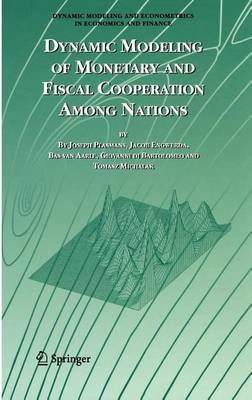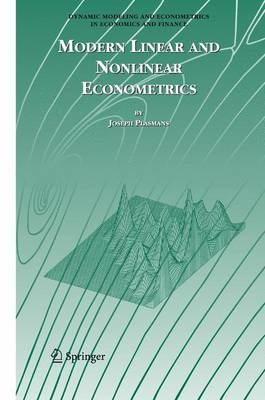Dynamic Modeling and Econometrics in Economics and Finance
2 primary works
Book 8
Dynamic Modeling of Monetary and Fiscal Cooperation Among Nations
by Joseph Plasmans, Jacob Engwerda, and Tomasz Michalak
Dynamic Modeling of Monetary and Fiscal Cooperation Among Nations analyzes coordination of monetary and fiscal stabilization policies between countries and currency areas using a dynamic game approach. The first four chapters introduce the reader to the dynamics of fiscal and monetary policy cooperation. Issues covered include: fiscal coordination, fiscal stringency requirements, structural and bargaining power asymmetries and the design of monetary and fiscal policymaking in a monetary union. In the four last chapters multiple-player settings with aspects of fiscal and/or monetary coordination are analyzed using the endogenous coalition formation approach. The analysis is focused on shock and model asymmetries and issues of multi-country coordination in the presence of (possibly many) monetary unions.
Book 9
Modern Linear and Nonlinear Econometrics
by Joseph Plasmans and J. E. J. Plasmans
The basic characteristic of Modern Linear and Nonlinear Econometrics is that it presents a unified approach of modern linear and nonlinear econometrics in a concise and intuitive way. It covers four major parts of modern econometrics: linear and nonlinear estimation and testing, time series analysis, models with categorical and limited dependent variables, and, finally, a thorough analysis of linear and nonlinear panel data modeling. Distinctive features of this handbook are:
-A unified approach of both linear and nonlinear econometrics, with an integration of the theory and the practice in modern econometrics. Emphasis on sound theoretical and empirical relevance and intuition. Focus on econometric and statistical methods for the analysis of linear and nonlinear processes in economics and finance, including computational methods and numerical tools.
-Completely worked out empirical illustrations are provided throughout, the macroeconomic and microeconomic (household and firm level) data sets of which are available from the internet; these empirical illustrations are taken from finance (e.g. CAPM and derivatives), international economics (e.g. exchange rates), innovation economics (e.g. patenting), business cycle analysis, monetary economics, housing economics, labor and educational economics (e.g. demand for teachers according to gender) and many others.
-Exercises are added to the chapters, with a focus on the interpretation of results; several of these exercises involve the use of actual data that are typical for current empirical work and that are made available on the internet.
What is also distinguishable in Modern Linear and Nonlinear Econometrics is that every major topic has a number of examples, exercises or case studies. By this `learning by doing' method the intention is to prepare the reader to be able to design, develop and successfully finish his or her own research and/or solve real world problems.

